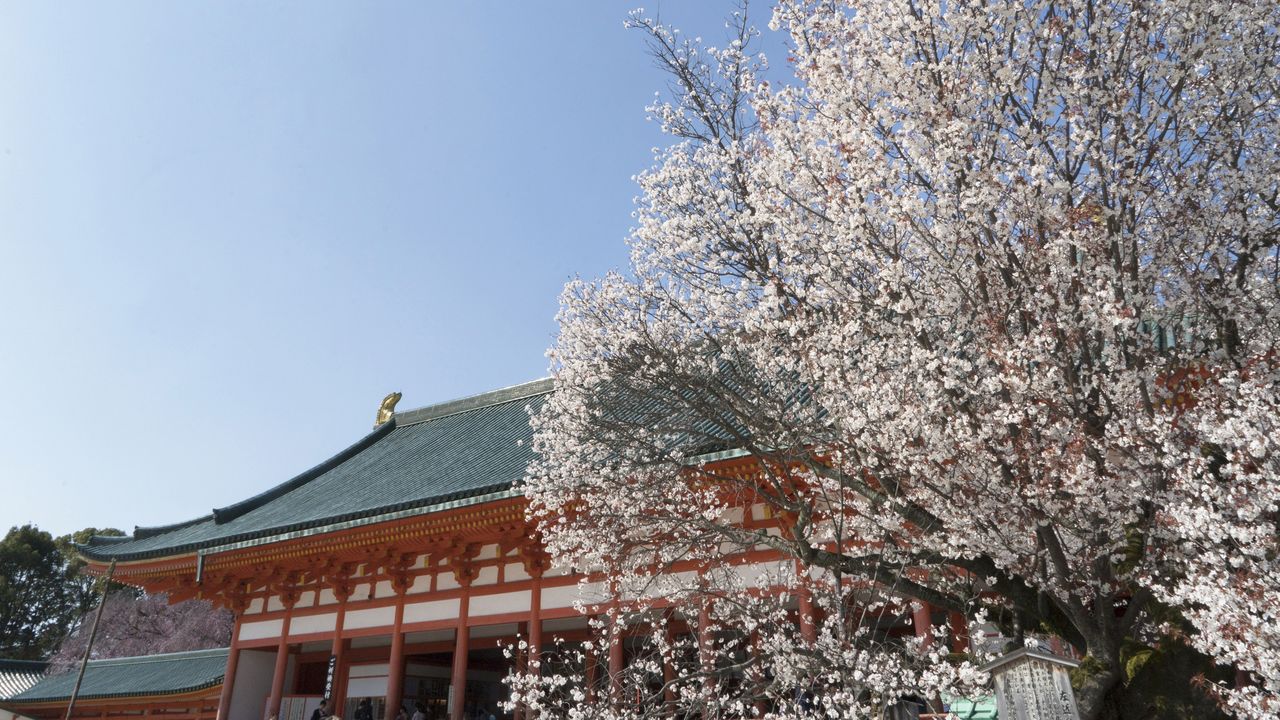
Memories of the Ancient Imperial Court at Kyoto’s Heian Jingū
Guideto Japan
Travel- English
- 日本語
- 简体字
- 繁體字
- Français
- Español
- العربية
- Русский
The Sakon no Sakura Stands Guard
Heian Jingū was built in 1895 to commemorate the 1,100th anniversary of the capital’s move to Heiankyō, now known as Kyoto. The shrine buildings are faithful 5/8-scale replicas of the original imperial palace structures. The complex is dedicated to the emperors Kanmu (737–806) and Kōmei (1831–67).
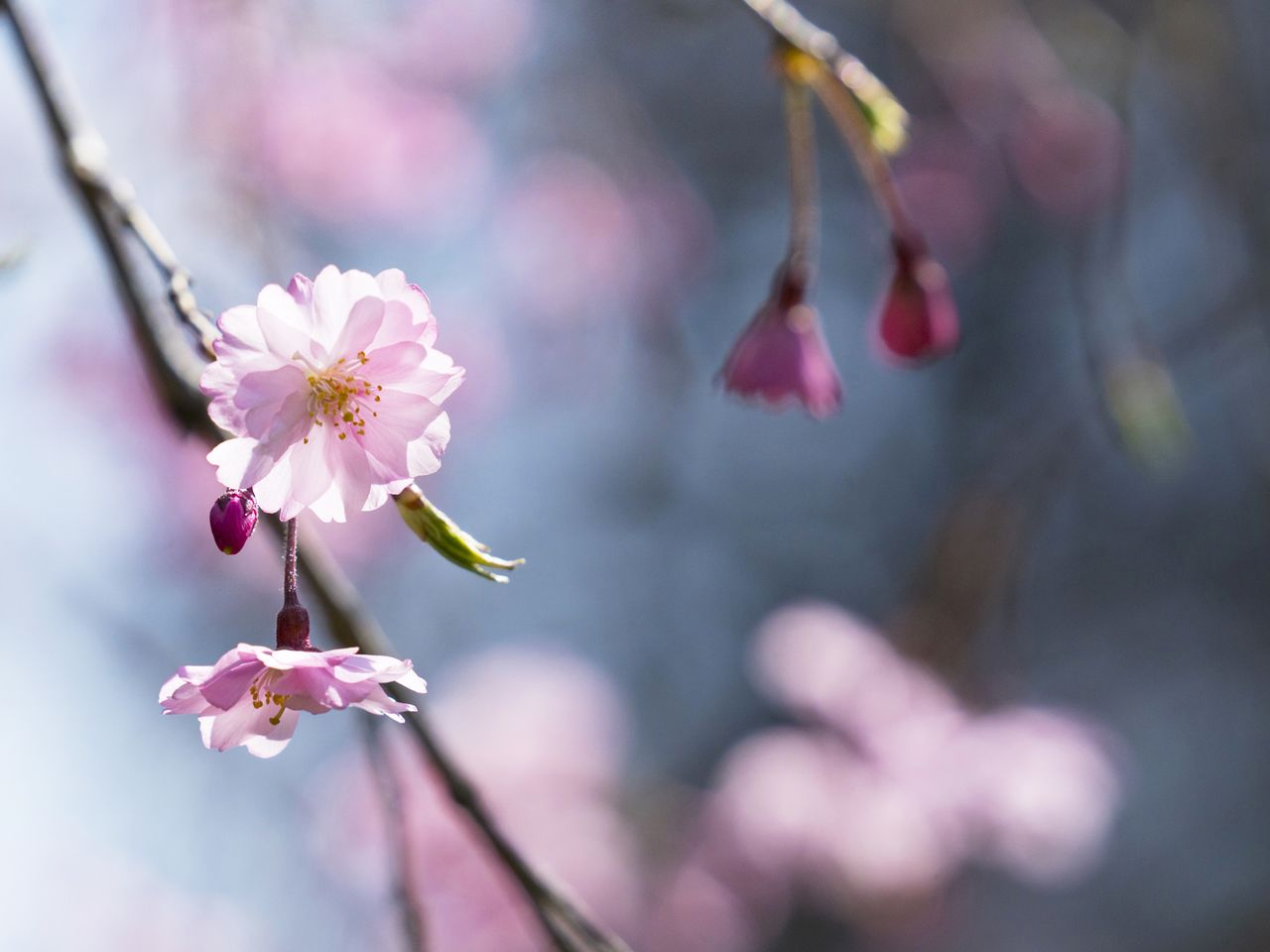
The multipetalled blossoms of a yaebeni shidare-zakura weeping cherry tree in Heian Jingū. The shrine gardens are also embellished with numerous somei yoshino cherries, and are best viewed from early to mid-April.
Pass through the shrine’s vermillion Ōtenmon main gate and you enter a vast courtyard bordered in the distance by the Daigokuden, the main hall where the emperor carried out state ceremonies. To the right of the grand building stands the magnificent Sakon no Sakura. Positioned on the left (sakon) as viewed from the building, this cherry tree marks a spot where imperial guards stood in attendance. In spring its delicate pink blossoms contrast pleasantly with the vermillion pillars and green tile roof of the great hall, a seasonal reminder of the elegant court life of old.
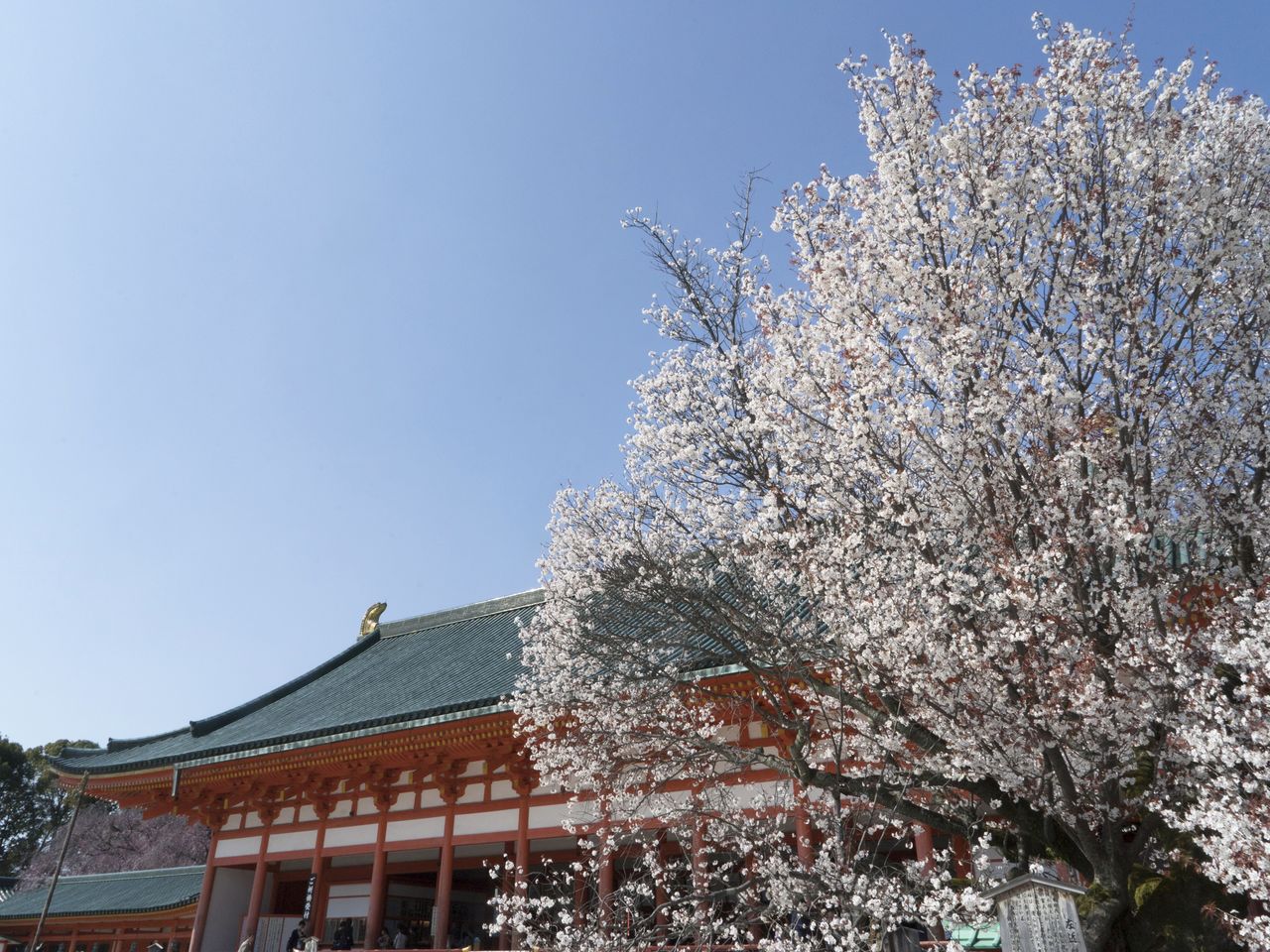
The Sakon no Sakura standing guard by the Daigokuden.
The Weeping Trees of the Shin’en Gardens
The shrine compound encompasses a vast garden of roughly 10,000 square meters divided into four gardens known collectively as the Heian Jingū Shin’en, a designated national scenic spot. Visitors can stroll through the gardens, which are dotted with ponds and 300 magnificent flowering cherry trees representing 20 different varieties.
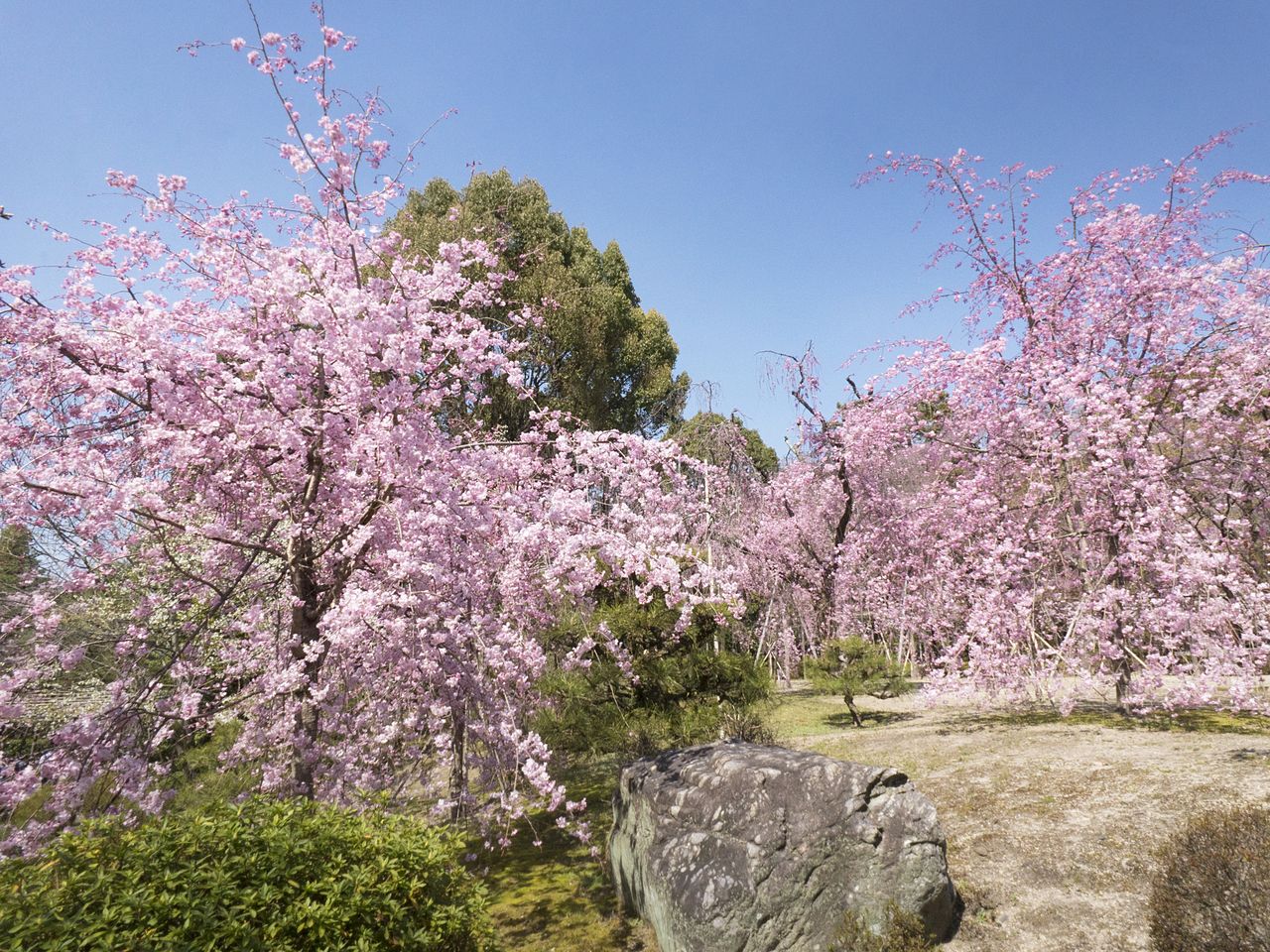
Around 150 weeping cherry trees are planted throughout the Shin’en gardens.
Upon entering the Shin’en from the west pathway, visitors are welcomed by the bright pink flowers of weeping cherry trees known as yaebeni shidare-zakura. The gentle pathway through this west garden provides lovely views of the Byakkorō tower and pretty reflections of the cherry blossoms in the Byakko Pond. A must-see attraction in the adjoining east garden is the Taiheikaku Bridge spanning the Seihō Pond, which can be glimpsed through the flowering branches of the surrounding trees. The bridge also provides a good viewpoint to enjoy the garden’s sweeping sight of cherry blossoms.
There is a ¥600 fee (¥300 for children) to enter the Shin’en gardens. During the cherry-blossom viewing season, visitors can enjoy tea ceremonies and concerts under the blossoms, and tie slips of paper with their fortunes written on them onto the cherry branches. We recommend checking the official Heian Jingū website before visiting the shrine. (Use the language pulldown menu for automated translation to get the gist of the site’s content.)
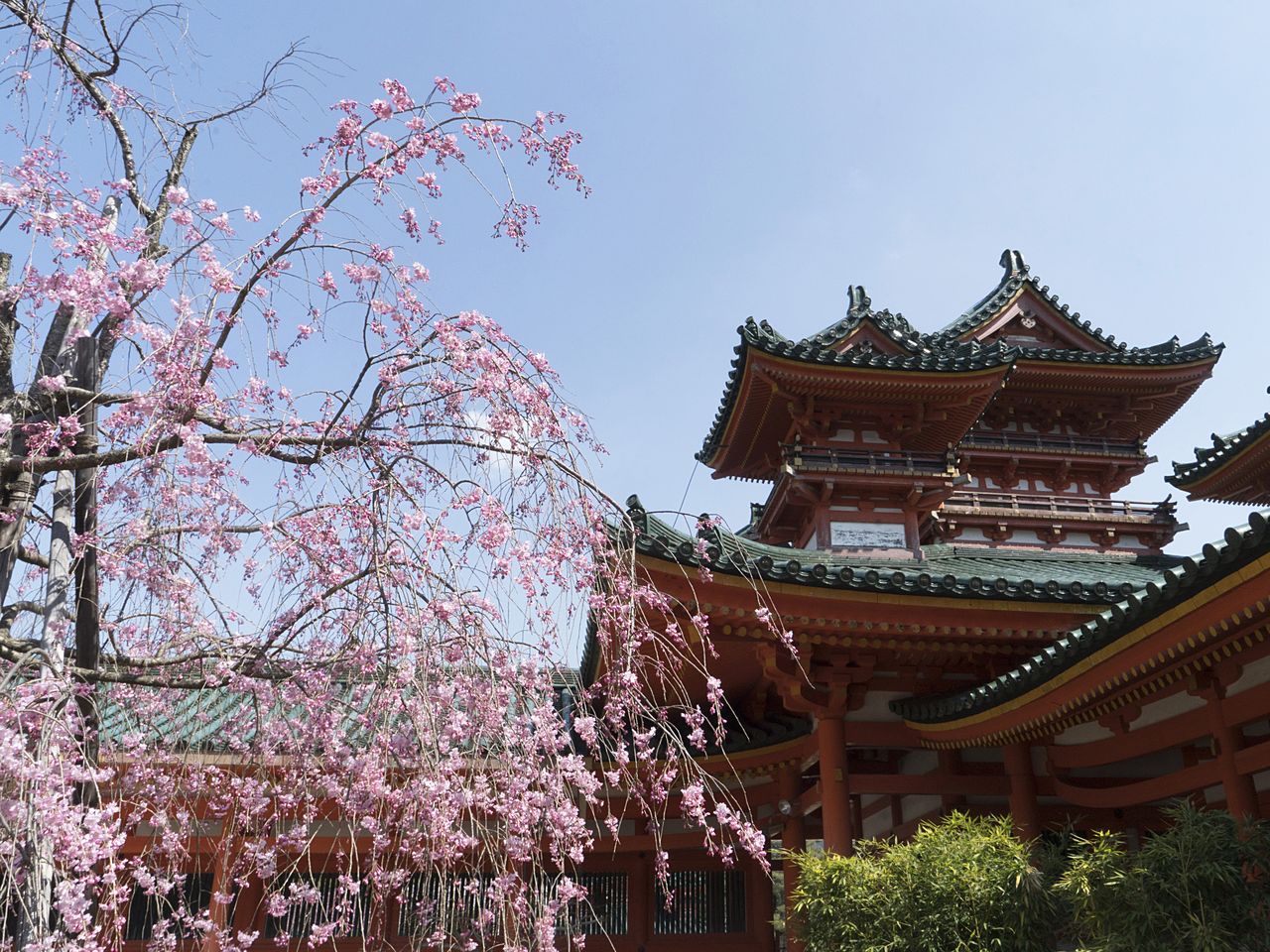
The Byakkorō tower at the entrance to the Shin’en gardens is a designated national important cultural property.
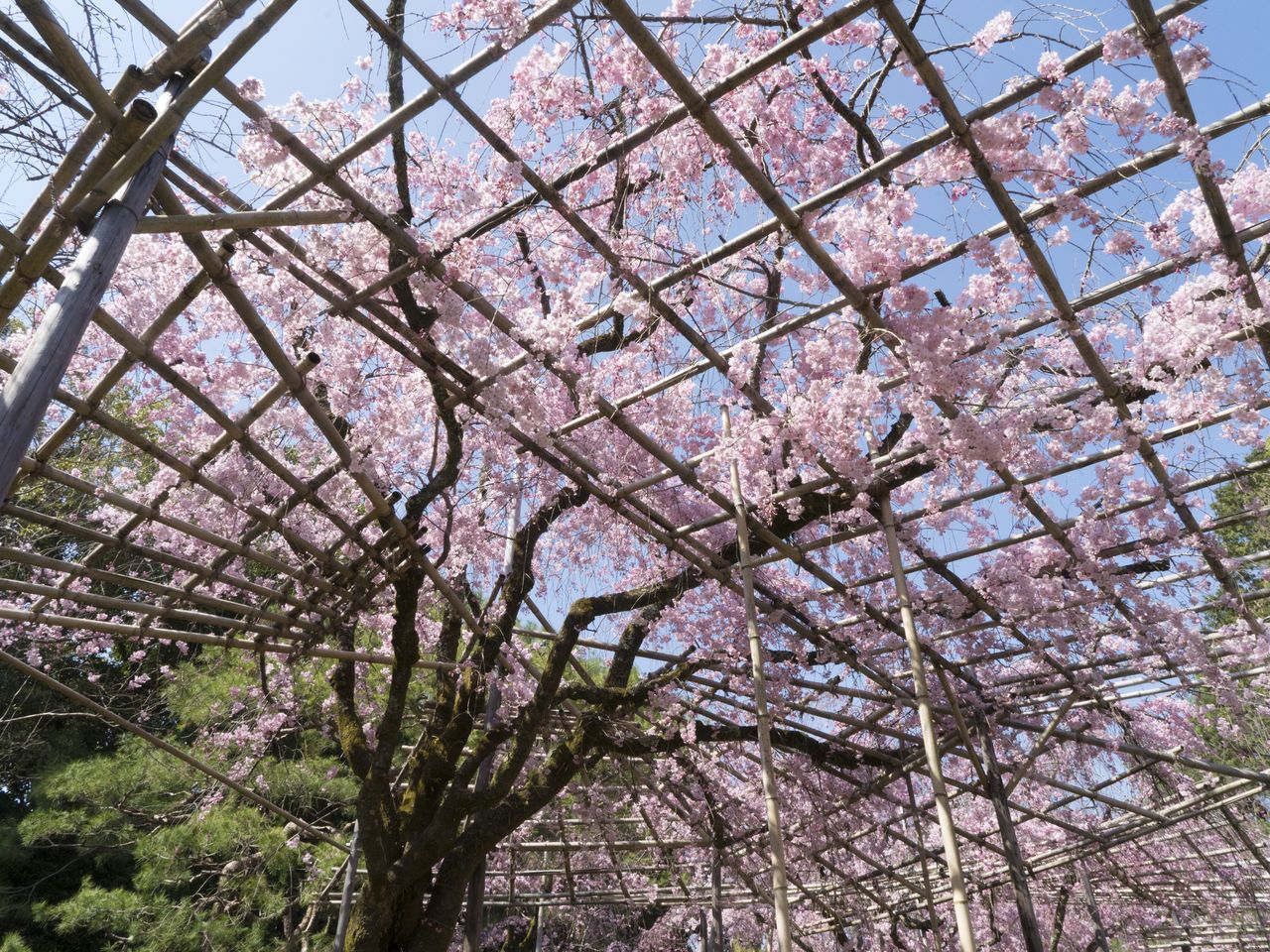
Visitors can walk through an arbor draped with the flowering branches of yaebeni shidare-zakura weeping cherry trees.
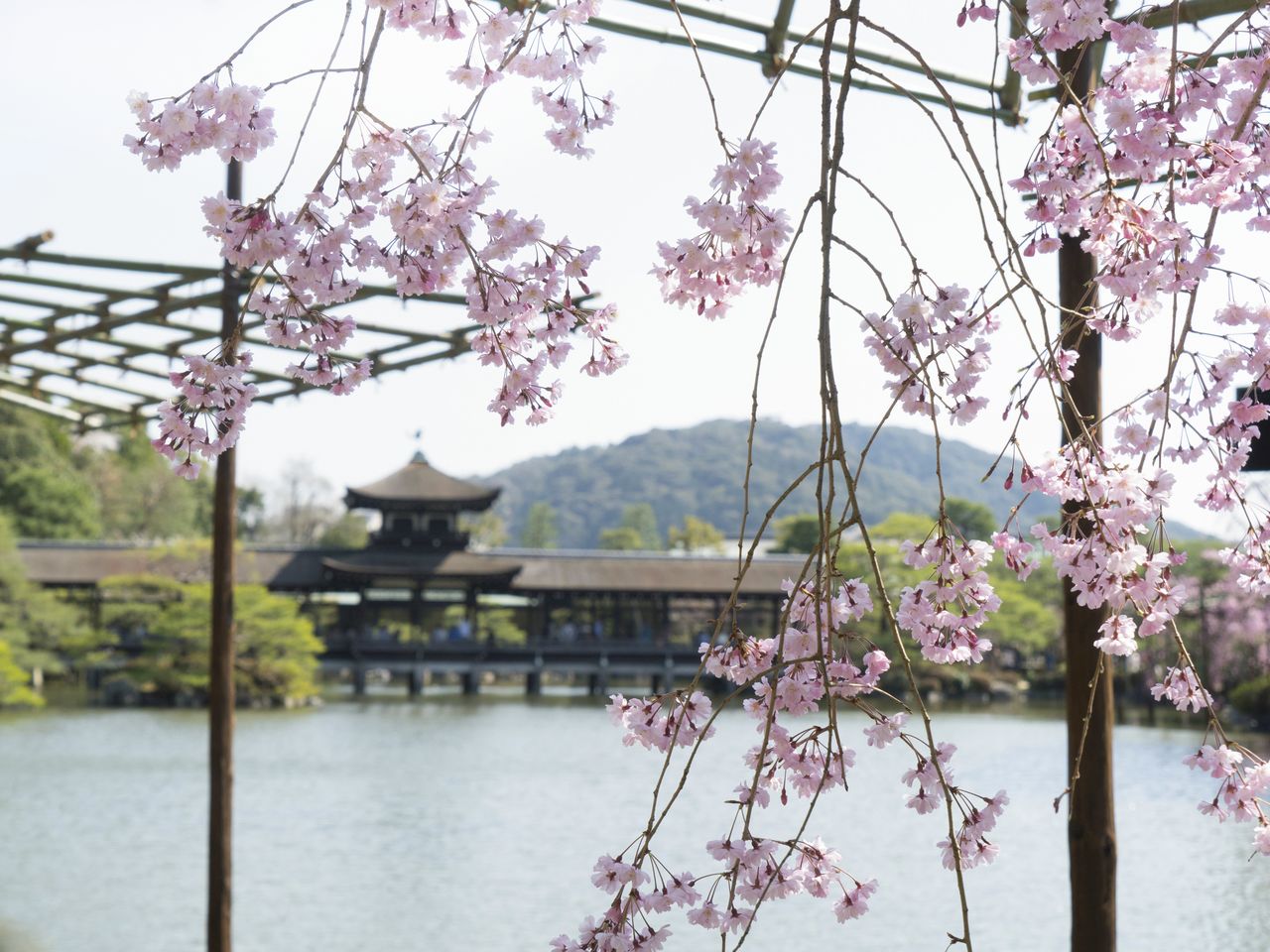
The Taiheikaku Bridge viewed through the blossoms.

Visitors viewing the Seihō Pond and the trees in the Shin’en east garden.
Access: Heian Jingū is a 10-minute walk from the Higashiyama Station on the Kyoto City Tōzai subway line, or a 5-minute walk from the Okazaki Kōen, Bijutsukan, Heian Jingū Mae bus stop on the Kyoto City Bus 5 and the Raku Bus no. 100 and no. 110 routes.
(Originally published in Japanese. Text by Fujii Kazuyuki; photos by Kuroiwa Masakazu and Fujii Kazuyuki, 96Box. Banner photo: The Sakon no Sakura in front of Heian Jingū’s Daigokuden.)
tourism sakura shrine Kansai cherry blossoms Kyoto University cherry blossom viewing cherry trees sakura landscape cherry blossom spots Kansai region shrines and temples